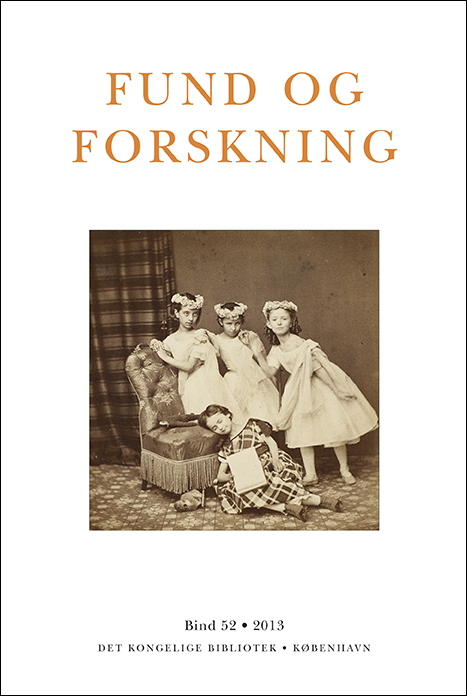Fra bondedans til karakterstykke for klaver. Musik i et proprietærlignende miljø i mellemkrigstiden
DOI:
https://doi.org/10.7146/fof.v52i0.41301Resumé
Although squires, proprietors and larger farmers played an important cultural and
political role in Denmark between 1870 and 1940, only very little is know about music
in their private homes in the countryside. The article is a perspective of musical life
on the farm Torpelund in Northwest Zealand during the interwar period. It examines
a previously unresearched aspect of Danish music culture in the 20th century on the
basis of comprehensive source studies and a contemplation of forms of music and cultures
within that spectrum, of which the researched subject matter forms a part. The
core of this is an in-depth analysis of the publication Gamle Danse fra Nordvestsjælland
(Old Dances from Northwest Zealand), 1–3 (1923–28). It was created and used at Torpelund
in a cooperation between two siblings from the farm, namely folklore collector
and columnist Christian Olsen, who collected and published the melodies, and the
pianist Christiane Rützou, who put them to piano. The publication is a key to understanding
the importance of music in the environment at Torpelund.
The article characterises the cultural transformation, which these dance melodies
underwent from string and brass accompanied peasant dances that were played by the
father of the two siblings in Northwest Zeland in the 19th century to becoming piano
pieces in the living rooms of the larger farms during the interwar period. With the
musical analysis, the author would like to develop analytical grips on this type of repertoire
used, which respect the musical characteristics of these repertoires. The study
discusses the special nature of Christiane Rützou’s piano arrangements and compares
them with a couple of Louis Glass’ rural pieces, which the composer and his wife performed
themselves at Torpelund. Is this dance music, educational teaching material,
popular music or romantic character pieces? The answer is that Christiane Rützou’s piano arrangements merge elements from popular dance music with romantic piano
music of the 19th century in a special way.
For Christian Olsen, the dance version was part of a conservative cultural struggle,
which at one and the same time desired to oppose the introduction of modern American
dancing while creating progressive, cheerful music to be used by farmers and
larger landowners. He wanted to transform the old dance music of the peasants in order
to preserve the values of the farmer and proprietary culture.


